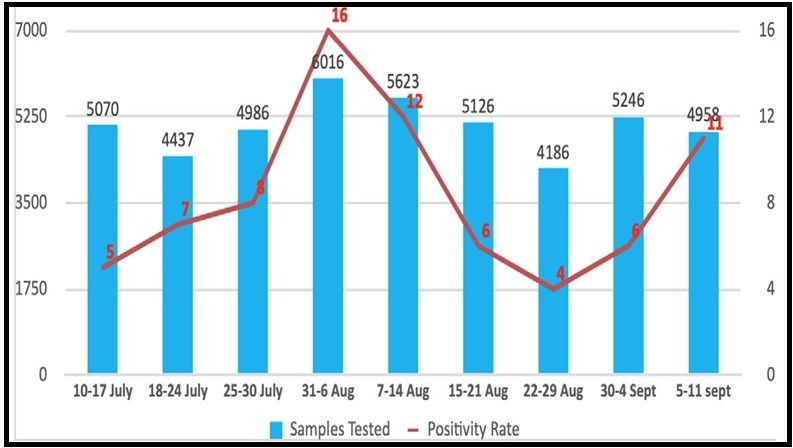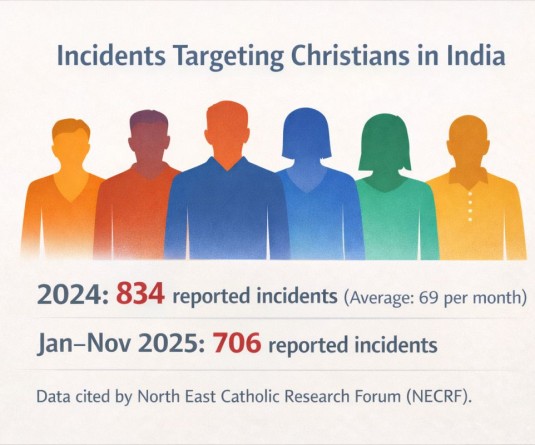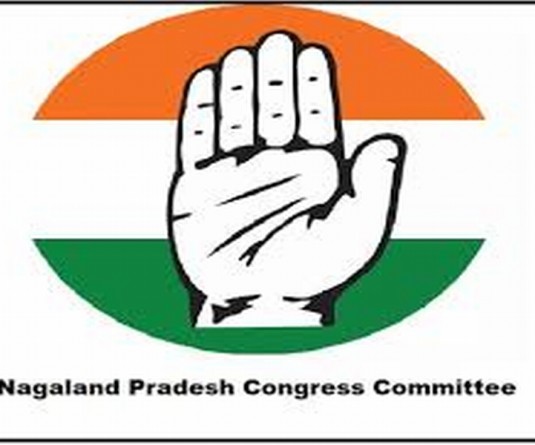The COVID-19 positivity rate in Nagaland as of September 11. (Image: Department Of Health and Family Welfare, Integrated Disease Surveillance Programme Kohima, Nagaland)

Testing pace improves to 34 per 1000
Morung Express News
Dimapur | September 12
Nagaland recorded 529 COVID-19 cases during the past week, the third highest in a one-week period, to date. More than half of the weekly total was registered on September 11, a day when the state witnessed the highest single-day spike of 310 cases. Out of the 310 cases, 164 were from the armed forces— most of which were Nagaland Police personnel, who have returned after serving in West Bengal.
The preceding week (September 5-11) recorded a total of 302 cases.
Further, as per the latest weekly COVID-19 analysis published by the state Integrated Disease Surveillance Programme, Department of Health & Family Welfare on September 12, “the positivity rate has increased in the last two weeks after a small decline.”
The positivity rate was 11 percent of 4,958 samples tested during September 5-11. It was 6 percent, during August 30-September 4, out of 5,246 samples tested.
The state has tested a total of 69,050 samples (as on September 12) with a positivity rate tipped at 7.16 percent, overall.
Despite the high positivity recorded during the past two weeks, it was still below the national average of 8.44 percent.
The testing rate has improved to touch 34 tests per thousand population during the course of the week against the 29.5 tests per thousand of the preceding week. The state still trailed behind the national 41 tests per thousand people.
Recovery-wise, Nagaland’s 76.65 percent was neck-to-neck with the country’s 77.77 percent.
Case distribution
The breakup of active cases (as on September 11) was attributed as 419 cases (37 percent) in military establishments, 592 (52 percent) in COVID Care Centres, 82 (7 percent) in home isolation and 41 (4 percent) in COVID Hospitals.
The total of active cases in home isolation came down to 77 on September 12.
Further, the weekly report said, “The most affected age group is 30-44 years at 45% (2207/4946) followed by 15-29 years at 37% (1826/4946), who could be major spreaders of the virus. Till date, 164 students are from traced positive contacts.”
It added that only 1 percent of the total cases are above 60 years of age and 0.34 percent has co-morbities. It said, “This could explain the low fatality rate till now,” but cautioned, “There is no room for complacency as fatality could be much higher once it infects more high-risk groups. Only self-discipline and adherence to standard safety measures will help us break this chain of transmission.”
Work places continued to be vulnerable to spread with the report stating that “maximum positive contacts” are government employees.
The armed forces’ (including the state police) contribution to the total recorded cases increased to 46 percent, followed by returnees at 28 percent. The percentage of frontline workers fell to 6 percent, while the percentage of traced contacts increased to 20 percent.
It appealed, “We are at a crucial juncture in this fight against the pandemic. The State has relaxed many establishments in the Unlock-4 guidelines only for livelihood sustainability and economic reasons. The threat of the virus is more than ever now. Every individual should strictly follow standard safety protocols to break the chain of transmission. Complacency at this juncture will prove to be very costly.”






